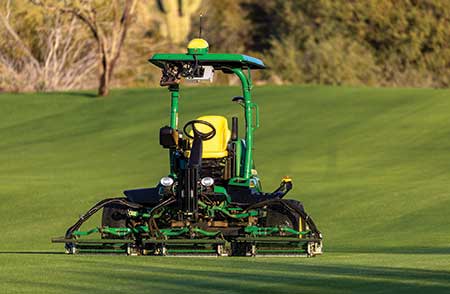Off the record: An update on the USDA-funded dollar spot work group

The USDA NC1208 project, involving numerous universities and research institutions, aims to enhance the management of dollar spot in turfgrass through a series of interconnected objectives focusing on the disease’s biology, epidemiology and management.
The five-year project has five objectives, including:
1) Improve understanding of dollar spot biology and epidemiology. Research continues to deepen knowledge of dollar spot through phylogenetic analysis and molecular quantification, particularly in response to the recent change in classification to Clarireedia species in 2018. Studies focus on a broad collection of dollar spot isolates to explore taxonomic variability and to assess factors such as host range, pathogenicity and fungicide response. Researchers also look at the timing of the disease, noting increased severity in different seasons and minimal genetic variation. Innovations in molecular diagnostics aim to enhance the pre-symptomatic detection of the fungus.
2) Assess resistance among new bentgrass cultivars. Efforts are underway to promote the adoption of new creeping bentgrass cultivars developed for improved resistance to dollar spot. These cultivars are tested on new golf courses or renovations. However, adoption has been slow, hindered by concerns such as potential revenue loss during renovation periods, risk of invasive species like annual bluegrass and uncertainty about the traits of new cultivars. Multi-institutional trials aim to demonstrate the economic and environmental benefits of the new cultivars, including strategies like interseeding that minimize disruption.
3) Develop integrated dollar spot management strategies. Research focuses on refining cultural practices and exploring fungicide alternatives to enhance disease control while reducing chemical use. Studies examine the impact of practices like fertility management and lightweight rolling on disease severity. Innovative application methods are also under investigation, such as drone-based precision spraying, alternative treatments like iron sulfate, plant-based fungicides and RNAi technology
4) Explore the efficacy of antagonistic organisms and microbial communities. Although no commercially viable biological products have yet been identified, research into biological control options continues. Collaborative efforts involve testing new and experimental biological compounds and investigating strategies to enhance the effectiveness of biocontrol agents. High-throughput sequencing identifies and enhances dollar spot suppressive microbial communities.
5) Improve communication strategies to disseminate research findings. The project leverages a network of extension specialists, industry partners and digital platforms to disseminate findings. Methods include traditional avenues such as field day demonstrations, trade journal articles, virtual field days and social media approaches.
Current and projected outputs from the NC1208 project include an extension fact sheet detailing the results of a resistant cultivar survey and best practices for managing dollar spots on resistant bentgrass cultivars, encouraging the selection of resistant varieties and reducing pesticide use.
Also, as I wrote about in the April 2024 issue of Golfdom, a March 2025 conference gathered stakeholders from various sectors to discuss current dollar spot management knowledge.
In addition to the conference, university field days will showcase research plots to educate superintendents on project outcomes. Virtual events will also share findings with a global audience, which is particularly beneficial for regions like Europe and Scandinavia, where the dollar spot is worsening and fungicide options are limited.
As a result, industry collaborations will focus on developing affordable technologies, like miniature weather stations, to enable precision management of dollar spot, potentially reducing management costs significantly.
For more information, visit the project website here.
Related Articles
Off the Record: Cleaning out the storage unit
Off the Record: A closer look at Oklahoma State University’s turf program











